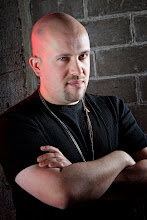Why I like Ju-on: The Grudge
1) Before we begin, a brief autobiographical digression. I was raised in a family that practiced Japanese Buddhism in San Francisco. My family hosted Japanese exchange students, my brother spent a lot of time in Japan, and I'm generally inclined to be favorable to all things Japanese horror.
2) Ju-on is my favorite horror movie of all time. I've seen it dozens of times and I'm still scared by it. When I used to have closing duty at GameStop, I'd put Ju-on on the monitor to keep me company. I have watched as many Takashi Shimizu movies as I can get my hands on. I love the movie beyond all rational sense and perspective. I don't discuss it often because I really don't want to hear any dissenting opinion that might change my perspective.
3) One of the scariest things about the film is that Kayako Saeki's rage cannot be stopped. As a person acclimated to the western idea of haunting, where a tormented spirit can be put to rest, there's no escape from Kayako's vengeance. What happened to her was so awful that no amount of appeasement will work. Her rage is a virus that infects and corrupts everything that it touches.
4) Because a straightforward story about an unstoppable doom would be an exercise in futility, Ju-on is broken up into a nonlinear narrative about the first family to fall victim to the curse, the hospice worker that takes care of the invalid grandmother, and the police investigator that falls to the grisly aftermath. It effectively turns the film into a series of interconnected vignettes, short stories tied together by a monster. The overarching story involving the poor hospice worker takes the final doom of the curse to a new and frightening place.
5) The movie has a lot of scenes of people hiding in beds, being haunted in their sleep, or just having Kayako's spirit watching them as they lie huddled in fear. My childhood often involved burrowing under covers and doing my best to control my bladder. I recognize the fear of the dark and the safety/vulnerability of hiding in bed. Ju-on exploits this masterfully.
6) We're never quite clear on what exactly happened to the Saeki family. We see all of their spirits in one form or another. The boy/cat seems to act as a harbingers. He doesn't act like a typical ghost child, standing and staring at people with a bloody head wound. Instead, his spirit has been fused with the cat. The hissing sound the boy makes renders him as even less than human. It reminds me of traditional obakemono demons, animal spirits that torment the unwary.
7) The final scene between Kayako and Rika, where Rika lays paralyzed with fear and Kayako's freshly-murdered body crawls down the stairs after her is one of the most terrifying things I've ever seen in my life. The classic theory about horror is that it's often only scary when you can't see the monster, but the deliberate pacing, the horrible croaking sounds, and Kayako's vicious sense of purpose combine to make the scene one of the scariest things I've ever seen committed to film. It's a nightmare incarnate, and that's why it works so well with me.
Conclusion: I'm more into creepy-horror than startle-horror. Most American horror films these days seem to be about creative a very specific rhythm of tension-shock-shock-break. I like movies that create a nightmarish atmosphere. Ju-on is utterly relentless, gloomy, and oddly beautiful. I have watched it dozens of times and I still find something new to discover in it's puzzle-box narrative and strange mysteries. It's my favorite horror film of all time.













No comments:
Post a Comment